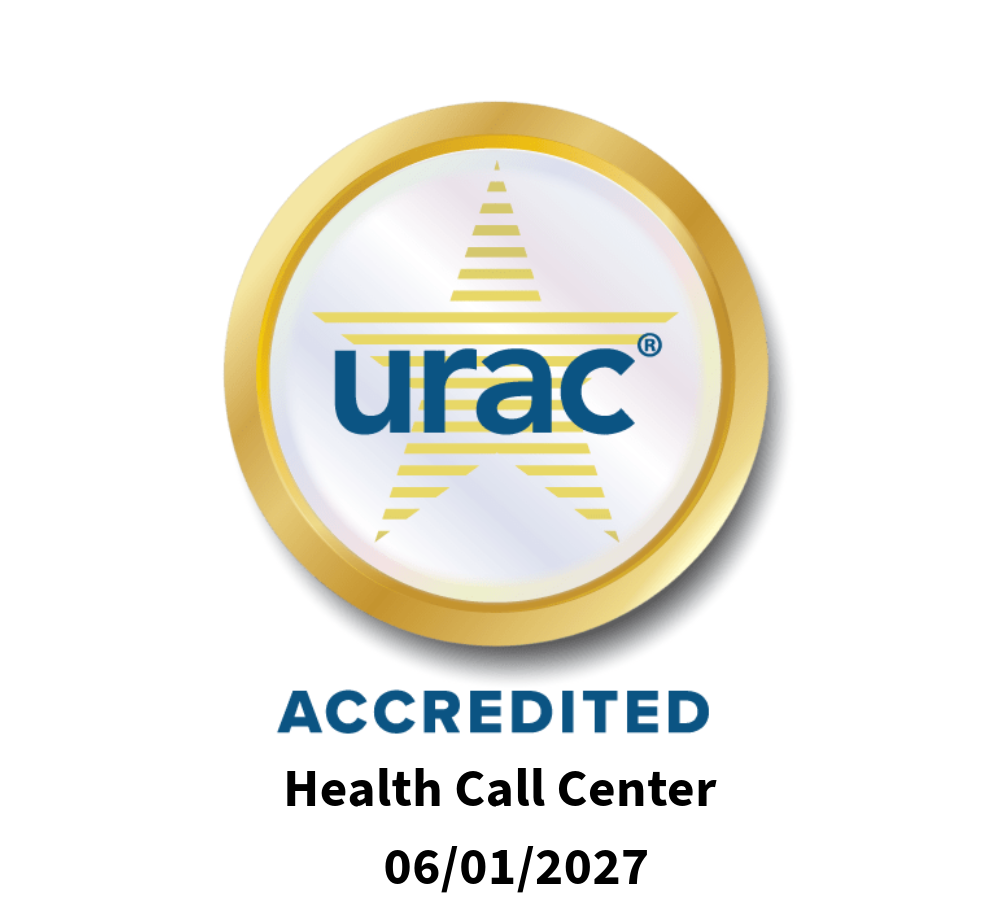Quality Assurance: Development, Maintenance, & Improvements
Striving To Continuously Improve QA Measures
Quality
We stand behind our goal of providing outstanding medical call center services by achieving and maintaining industry accreditation, performing ongoing evaluations and consistent oversight of our services.
- Continuously accredited by URAC since 2004
- Two governing boards – QI Committee and Clinical Advisory Board; comprised of physicians, nurses, pharmacists and other healthcare providers
- Nurse Advisory Council – Monthly meeting of RNs to discuss concerns, review/consider changes related to policy and procedure; supports QI team, operations & training initiatives
- In-house adult and pediatric medical director oversight
- Comprehensive CQI Program – Includes all call center departments; evaluates, monitors and documents all aspects of call center operations. Features include:
– Daily Monitoring – Communication (silent monitoring and listening to live and/or recorded calls) and documentation (call record reviews).
– Focused Audits – Conducted to identify opportunities for improvement in our call process
– Benchmarking – All QI issues are addressed by a cycle of measurement, trends identification, action plans, actions taken and re-measurement
Education & Training
All staff complete a formal orientation program led by our RN Director of Training in our training lab. Training includes focused classroom instruction, live calls with a one-on-one preceptor, and an assigned mentor. Staff is also trained in cultural diversity and working with dual eligible and dual-diagnosis members. Staff must be deemed competent by our RN Director of Training in our various programs, including TeamPeds, TeamOB and TeamCare prior to independent work.
RNs participate in a vibrant continuing education process after orientation. This process includes:
- Completion of CEUs to meet state licensure requirements
- Quarterly population-specific education with symptom assessment emphasis
- Corresponding case studies
- Annual review of new and updated guidelines
- Annual completion of high-risk competency training in OB and Pediatrics (<12 weeks)

"Gold Standard" Telephone Triage Guidelines
AccessNurse RNs utilize sophisticated software with symptom-driven guidelines written by two recognized leaders in the healthcare field, Barton Schmitt, M.D., Pediatrics, and David Thompson, M.D., Adult & Adolescent. In 1994, Dr. Schmitt wrote the first computerized pediatric triage guidelines. Now, 24 years and more than 175 million calls later, its predominant use in the medical call center industry has established Schmitt-Thompson Clinical Content as the ‘Gold Standard’ for telephone care. The clinical content is used by more than 400 health systems and health plans and an additional 10,000+ physician practices across the country.
| 2023 After-Hours Protocols | |
| Sample After-Hours Adult Triage Protocols 2023 | |
| Sample After-Hours Pediatric Triage Protocols 2023 |


Call Auditing & Quality Measures
Nurse Triage calls are constantly and consistently monitored by a team of trained RNs who have proven expertise in remote patient care. Safety, patient experience, adherence to the guidelines and appropriate outcomes are measured. Calls are monitored on a regular basis using a comprehensive audit tool and scored based on pre-established criteria. The audio, written account, and recorded screen capture of the encounter is evaluated. The call flow process mirrors the nursing process and the audit tool is aligned accordingly.
Criteria measured include:
- Therapeutic rapport
- Adherence to provider’s customized directives
- Identify priority situations
- Guideline selection and adherence
- Thorough assessment
- Critical thinking
- Minimizing risk
- Advise to most appropriate level of care, in timely manner
- Patient satisfaction
An audit score below 95% prompts a RN intervention to improve patient care and contribute to the success of the caregiver. Interventions include written reminders, in-services, 1:1 preceptor coaching, peer support and increased call monitoring.
Annual reviews are conducted as well as informal monthly performance meetings with clinical managers. Monthly manager meetings cover both strengths and weaknesses of the nurse’s current performance, expectations, and future goals.


